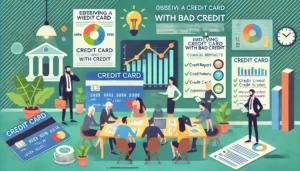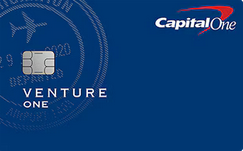How to get a credit card with bad credit. A bad credit score may only hinder a customer’s ability to get a credit card if proven otherwise. A customer can access a credit card by following unique processes, procedures, and approaches. With a good plan and options, a customer can rebuild his/her credit scores, and hence, his/her financial profile becomes credible again.
Getting a credit card with bad credit can seem like a challenge, but it’s not impossible. Many financial institutions offer options designed specifically for individuals working to rebuild or establish their credit. These cards typically come with certain conditions, such as higher interest rates or lower credit limits, but they provide a valuable opportunity to demonstrate responsible credit use. With the right strategy, including selecting the right type of card, understanding the terms, and managing payments diligently, you can use these credit cards as a stepping stone to improve your credit score and gain access to better financial opportunities in the future.
5 Strategies on How to Get a Credit Card with Bad Credit: Top Options, and Expert Tips

2.0 Understanding Bad Credit
In the US, bad credit is a FICO score below 580. This score could result from late payments or loan defaults, high credit utilization, or a customer’s lack of borrowing money from any financial institution (the customer needs a credit history). A bad score could limit the ability to get loans and credit cards, but some issuers offer products for customers facing these challenges (Experian, 2023).
Finding the best credit card that accepts customers with bad credit history or credit scores is an important opportunity for the customer to use the credit card accordingly and rebuild his/her credit history.
3.0 Effective Strategies on how to successfully apply for a credit card with bad credit
3.1 Review the Credit Report
The first step on how to get a credit card with bad credit is to acquire a credit report from the three largest credit bureaus: Equifax, Experian, and TransUnion. One of the federal laws regarding this situation allows customers to access a free report once a year through AnnualCreditReport.com.
Suppose a customer finds any errors after reviewing the report, such as inaccurate late payments or accounts that do not belong to the customer, on the report. In that case, a customer can dispute each of those discrepancies (Federal Trade Commission [FTC], 2024).
For instance: Anna found a missed payment on her report—about a loan she never took. She disputed it and improved her score by 30 points, which meant she had a better chance of receiving more credit card approvals.
3.2. Use Prequalification Tools
Most credit card issuers offer prequalification tools that let customers see if they are likely to qualify for one area without triggering a hard inquiry (which can temporarily lower a customer’s score). For example, Capital One and Discover both support user-friendly prequalification interfaces that provide results quickly (Capital One, 2024).
4.0 Types of Credit Cards for Bad Credit
4.1 Secured Credit Cards
Remember that these are secured credit cards, and customers are supposed to provide a refundable security deposit to be eligible. The security deposit is usually set at the same amount as a customer credit limit.
Examples:
- Discover it Secured Credit Card: Provides 2% cash back at gas stations and restaurants and 1% back on all other purchases, with no annual fee. Reports to 3 major credit bureaus (Discover, EX, 2024)
- Capital One Platinum Secured Card: Capital One offers more accessible low-cost secured credit cards today. A customer can provide a deposit as low as $49 for a $200 credit limit and is not required to pay an annual fee with this card, which aims at helping customers build or rebuild their credit cards (Capital One, 2024)

4.2 Unsecured Credit Cards
In order to get a credit card with bad credit customers should acquire unsecured credit cards which do not require a deposit but also carry higher fees and interest rates.
Examples:
- Indigo Platinum Mastercard®: is a perfect credit card for rebuilding credit. The Indigo card offers pre-qualification without a detailed inquiry into the borrowers.
- Petal 1 Visa Credit Card: Offers no fees, cashback on select purchases, and reports to major credit bureaus (Petal, 2024).
4.3 Retail Credit Cards
Exclusively branded retail credit cards are provided to specific customer categories to enable customers to get a credit card with bad credit and tend to be easier for consumers to obtain. Such cards, of course, are the best option for repairing credit, but they also usually comprise high short-term costs and interest and have limited application.
Example: A store card from a retailer like Target or Kohl’s may accept those with limited credit or even bad credit and could hence offer a way out of recovery.
4.4 Apply for the Right Card
After proper evaluation of several credit cards, as well as personal evaluation using the really available prequalified credit assessment tools used to determine risk; customers should make sure that they meet the bank or financial institutions eligibility criteria. If customers find out that they are eligible or qualified, they should immediately apply for the credit card confidently.
5.0 Top Credit Card Options for Bad Credit
5.1. Discover it Secured Credit Card
- Advantage: Cashback rewards, no annual fee, reports to all credit bureaus.
- Disadvantage: Requires a deposit equal to the credit limit.
- Why It’s a Good Choice: Rewards encourage responsible spending while aiding credit rebuilding.
5.2. Capital One Platinum Secured Card
- Benefits: Low initial deposit, no annual fee, potential for credit line increase.
- Drawbacks: No rewards.
- Why It’s a Good Choice: Ideal for those looking for a low-risk, straightforward way to build credit.
5.3. Petal 1 Visa Credit Card
- Benefits: No deposit or annual fee, cashback on select purchases.
- Drawbacks: Requires a fair credit score to qualify.
- Why It’s a Good Choice: A strong unsecured option for rebuilding credit without upfront costs.
5.4. Sable ONE Secured Credit Card
- Benefits: No annual fee, cashback on purchases, opportunity to transition to an unsecured card after responsible use.
- Drawbacks: Requires a security deposit.
- Why It’s a Good Choice: Rewards and the chance to graduate to an unsecured card make this an excellent option for credit rebuilding.
6.0 Strategies on How to Get a Credit Card with Bad Credit
- Pay on Time, Every Time
Payment history accounts for 35% of your FICO score. Set reminders or enable autopay to ensure bills are paid on time (MyFICO, 2024).
Example: John set up automatic payments for his secured card, ensuring he never missed a due date. His credit score increased by 50 points in six months.
2. Keep Credit Utilization Low
Credit utilization is the percentage of your credit limit you use. Experts recommend keeping this ratio below 30% (Experian, 2023).
Example: With a $500 limit, Sarah ensures her balance never exceeds $150. Her consistent low
utilization helped raise her score by 40 points in a year.
3. Monitor Your Credit Regularly
Track your progress through free credit monitoring tools offered by many credit card issuers, such as CreditWise by Capital One or FICO Score tools from Discover.
4. Avoid Applying for Too Many Cards
Each hard inquiry can lower your score slightly. Be selective and focus on one or two targeted applications (FTC, 2024).
5. Transition to an Unsecured Card
Many secured cards, such as the Discover it® Secured, allow you to upgrade to an unsecured version after demonstrating responsible use.
7.0 Common Pitfalls to Avoid
- High-Fee Cards
Some credit cards for bad credit come with steep annual fees, processing fees, or high APRs. Research thoroughly before applying. - Maxing Out Your Card
High utilization signals financial distress and can harm your score. Use only what you can pay off in full each month. - Ignoring Terms and Conditions
Read the fine print to avoid surprises, such as hidden fees or penalties.
8.0 Real-Life Example: Emma’s Path to Better Credit
Emma had a credit score of 520 due to late payments on student loans. She followed these steps to rebuild her credit:
- Obtained a Secured Card: Emma applied for the Discover it® Secured Credit Card, depositing $200 for a $200 limit.
- Used the Card Responsibly: She spent only $50 monthly and paid it off in full before the due date.
- Monitored Her Progress: Using free credit monitoring tools, Emma tracked her improvements over six months.
- Upgraded: After one year of on-time payments, she transitioned to an unsecured card with a higher limit.
Today, Emma’s score stands at 680, and she qualifies for premium credit cards with better rewards.
9.0 Conclusion
It may be difficult to secure a credit card when a customer has bad credit, but it is definitely possible. A customer should concentrate on secured cards, stay away from high charges, and develop responsible credit management behavior and best credit practices as advised by financial professionals. This will be the best approach to rebuilding a credit score and eventually providing more financial opportunities down the line.
Also read:
Understanding Credit Cards: 20 Key Insights for Savvy Consumers
The Best 10 Ways to Save Cost During Winter Season the in Coldest States in USA
References:
Capital One. (2024). Capital One Platinum Secured Credit Card. Retrieved from
Discover. (2024). Discover it® Secured Credit Card. Retrieved from https://www.discover.com
Experian. (2023). How to Build Credit. Retrieved from https://www.experian.com
Federal Trade Commission. (2024). Your Rights to Free Credit Reports. Retrieved from
MyFICO. (2024). Factors that Affect Your FICO Score. Retrieved from https://www.myfico.com
Petal. (2024). Petal 1 Visa Credit Card. Retrieved from https://www.petalcard.com

Be the first to comment